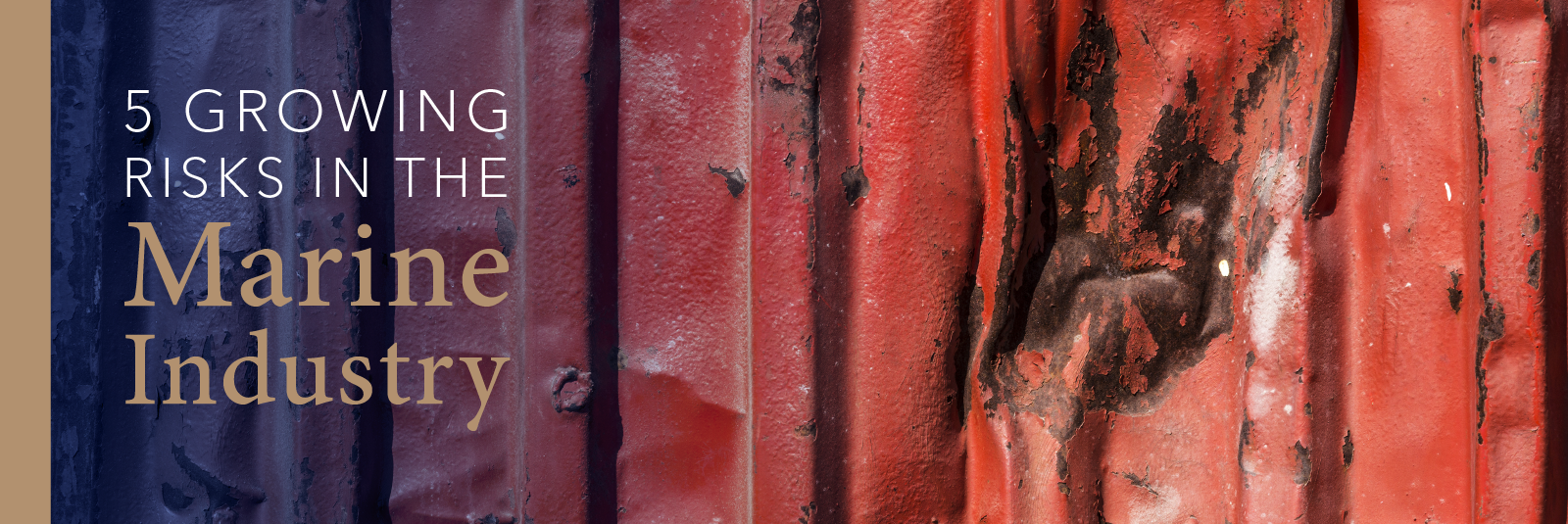Container trade accounts for approximately 60 percent of all world seaborne trade, which was valued at around 12 trillion U.S. dollars in 2017. It’s clear that the marine industry is evolving quickly and there are some noticeable risk trends materializing. The recently published Lloyd’s of London Emerging Risk Report 2018 highlights several of these trends in marine risk, making for some very interesting reading for those with their eye on the future of the industry. Here’s a quick summary of five growing risks trends from the report to be aware of:
- Traffic Is Increasing Dramatically
With the explosion of international trade over the past few decades and the globalization of supply chains, more ships than ever are traversing the oceans. In fact, maritime traffic on the world's oceans has increased four-fold over the past 20 years. The most expedient and safest shipping routes were established long ago, meaning that all these vessels are essentially plotting similar courses to a small number of popular ports. For example, the five leading container-handling ports in the world are all in Asia. In 2016, the port of Shanghai was the busiest container port in the world, handling about 37 million TEUs of containerized cargo.
While most cities won’t have to manage the incredibly frenetic pace of Shanghai’s port, there is still significant risk in the concentration of traffic on ports and canals that may not be equipped to handle the increase in volume and congestion.
- Ships Are Getting Bigger
Globalization has not only put more ships on the water, but has also incentivized bigger ships.
Vessels are growing in size and it’s more economical to ship in bulk. According to Lloyd’s Emerging Risk Report, “In 2000, the biggest container ship could carry about 8,000 containers. Now, the largest ships carry over 19,000 containers, and this trend seems likely to continue.”
Why does bigger equate to riskier? Bigger ships have more to lose in a single incident, can cause more environmental damage, and are harder to repair, salvage, or remove if wrecked. The larger container ships also have fewer ports that they can actually berth, which brings additional challenges.
- Transporting Hazardous or Dangerous Materials Is More Common
With more traffic and more cargo on bigger ships, it’s becoming commonplace for hazardous or dangerous materials to be on board. Whether these risky goods are declared correctly or not, simply the fact that they are on the vessel leaves the ship owner, as well as every party with goods on board, vulnerable to risk. If an incident occurs due to a dangerous item (for example, a ship-board fire), the risk of loss and liability is significant. These hazardous materials could be as innocuous as lithium-ion batteries or even powdered milk, which is extremely combustible.
- Maritime Regulation Is More Complex
Marine risk is heavily influenced by the regulation changes handed down by the International Maritime Organisation (IMO). While the IMO sets standard safety regulations, a vessel’s country of registration (flag state) must enforce these regulations. Risk trends surrounding these regulations are emerging because:
- Flag states are imposing additional regulations that may increase the costs of marine incidents
- Flag states decide not to ratify certain regulations, which creates inconsistent regulations and potential gaps in liability
- A number of important international treaties limit ship owner and insurer liabilities in the event of a marine incident occurring within signatory waters.
- Cyber Attacks Are Real
As the marine industry adopts more sophisticated systems and tools, such as integrated navigation, radar, and communications technologies, the threat of cyber attacks becomes much more real. This is particularly a risk for autonomous vessels, which are predicted to be the future of the marine industry.
Other growing risks such as piracy and geopolitical instability also have a part to play in the marine industry. Falvey Cargo monitors these trends and helps our clients navigate industry changes, ensuring they are protected from loss and liability.




